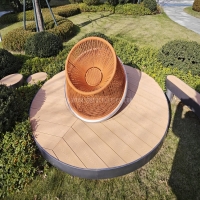Welcome to the website for landscape facilities products and knowledge.
How does the table’s design accommodate the use of outdoor heaters or fire pits nearby?
When designing outdoor living spaces, accommodating heating elements like patio heaters and fire pits requires thoughtful consideration of both safety and functionality. The integration begins with proper spatial planning, where tables should be positioned at least 3-4 feet from heat sources to prevent accidental contact while maintaining conversational proximity.
Modern outdoor tables increasingly incorporate heat-resistant materials in their construction, with powder-coated aluminum, teak, and certain composite materials offering superior resistance to radiant heat. Some innovative designs even feature built-in fire pits or central cutouts specifically engineered to accommodate removable heating elements, creating a cohesive and safe gathering point.
The table's structural design plays a crucial role in heat accommodation. Sturdy, weighted bases prevent tipping from accidental bumps, while slatted or perforated designs allow heat to circulate more effectively rather than trapping it beneath the surface. For permanent installations, materials like concrete, natural stone, or specially treated metals provide both aesthetic appeal and inherent fire resistance.
Proper clearance remains paramount - not just horizontally but vertically as well, considering the heat rise from fire features. Tables with lower profiles or cantilevered designs can create safer arrangements by keeping flammable surfaces further from heat streams. Additionally, selecting tables with minimal overhang reduces the risk of people accidentally leaning into heat zones when seated.
Beyond physical attributes, the functional layout should consider traffic patterns around heating elements, ensuring safe passage without compromising the social dynamic. Many landscape designers recommend creating "heat zones" where tables, seating, and heating elements work in concert, rather than as separate entities. This holistic approach results in outdoor spaces that remain comfortable and inviting long after the sun sets, while maintaining essential safety standards throughout the seasons.
Related search:

Recommendation
Swivel chair-Specialty steel structure woven rattan leisure chair with rotatable design